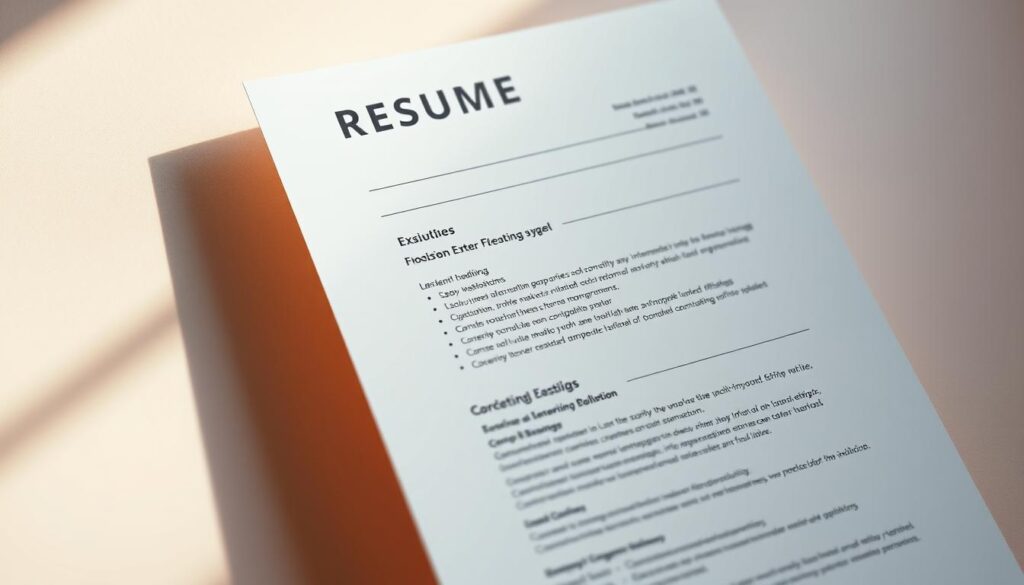Anúncios
In today’s highly competitive job market, the importance of creating a standout resume cannot be overstated, especially when it comes to grabbing the attention of recruiters. With a plethora of applicants vying for the same positions, job seekers must find ways to differentiate themselves. One of the most notable trends in resume writing is the increasing popularity of the one-page resume. This format has captured the interest of both job seekers and HR professionals alike, making it a relevant topic in the field of career development.
A one-page resume places a strong emphasis on clarity, conciseness, and effectiveness. In industries where time is of the essence, having a succinct resume can be particularly beneficial. Recruiters are often inundated with applications, and research shows that they typically spend only six to seven seconds reviewing each resume. Therefore, making a strong first impression is absolutely crucial. With a well-structured one-page resume, you not only highlight your most relevant skills and experiences, but you also avoid overwhelming the reader with excessive information.
The primary goal of a one-page resume is to present your qualifications and experience succinctly and efficiently. The key is to deliver a clear picture of your capabilities without diluting your message. This format is especially suited to entry-level positions or candidates with relatively less extensive work histories, as it allows them to focus on what’s most important. By distilling your career journey into a single page, you’ll demonstrate to potential employers your ability to communicate effectively—a trait that is highly valued in today’s workplace.
When creating an effective one-page resume, the first step is to choose a clean and professional format. Utilizing easily readable fonts such as Arial, Calibri, or Helvetica will go a long way in ensuring your resume is accessible. Maintaining a font size between 10-12 points is crucial for readability. Consistency is key; make sure that your margins, spacing, and overall formatting are uniform to present a polished, organized document. A straightforward and simple layout is essential for navigating quickly through your resume, allowing hiring managers to focus on your qualifications without being distracted by cluttered design elements.
The first element your resume should feature is a concise summary or objective statement. This brief section should encapsulate your career aspirations while highlighting your most significant skills. Ideally, this summary should be no longer than three sentences and must clearly convey the value you bring to a potential employer. It is important that you tailor this summary to match the job you’re applying for, ensuring that it reflects the specific qualifications and experiences that align with the requirements of the position.
Anúncios
After your summary, it’s time to delve into your work experience. Focus on the most relevant roles you’ve held in your professional career. Organize your work history in reverse chronological order to showcase your most recent positions first. For each role, clearly state your job title, the company name, its location, and the dates of your employment. To make the most impact, utilize bullet points to highlight your key responsibilities and, even more importantly, your accomplishments. Quantifying your achievements by including figures, such as percentages or dollar amounts, can further illustrate the tangible impact you’ve had in your positions.
Another essential part of your one-page resume is the skills section. This segment should be targeted and include both hard and soft skills appropriate to the job you are seeking. Hard skills refer to technical qualifications, such as specific programming languages or software proficiency, while soft skills encompass abilities like communication, leadership, and teamwork. A well-rounded mix of both types of skills can demonstrate your comprehensive qualifications to potential employers, making you a more appealing candidate.
Furthermore, the education section cannot be overlooked. This part should list your highest degree first, followed by any relevant certifications or coursework that might pertain to the job. If you have recently graduated, it may be beneficial to include your GPA, provided it is particularly strong. For candidates with more significant work experience, the education section can be summarized briefly, as employers often prioritize your professional accomplishments over academic achievements.
As you craft your one-page resume, tailoring your content for each specific application is vital. Take the time to study the job description in detail and align your resume with the qualifications, skills, and experiences highlighted there. By customizing your resume to reflect the language and requirements of the job, you signal to recruiters that you’ve given thoughtful consideration to the role and are genuinely interested in the opportunity. This level of attention can set you apart from other candidates.
While brevity is crucial in a one-page resume, it’s essential not to sacrifice content in the process. Each word should carry weight and relevance to the position you’re targeting. Avoid filler phrases or unnecessary jargon and instead, focus on communicating your achievements and contributions using clear, impactful language. Employing strong action verbs to initiate each bullet point can help create a vibrant and engaging narrative of your professional journey.
Moreover, adopting a professional tone is crucial during the resume writing process. Striking a balance between confidence and approachability can enhance perceptions of your candidacy. Make sure that your language is formal yet relatable, reflecting your personality in a manner suitable for the work environment you aspire to enter. This tone can help foster a connection with the reader, making you more memorable in a sea of applicants.
It’s pertinent to note that the rise of applicant tracking systems (ATS) has had a considerable influence on the landscape of resume writing in recent years. Many organizations use these systems to pre-screen resumes based on specific keywords and phrases. Thus, it is wise to incorporate relevant keywords from the job description into your one-page resume to improve your chances of passing through these ATS filters. However, it is essential to ensure that the text remains natural and coherent, avoiding the temptation to stuff your resume with keywords that disrupt the flow.
One of the most significant challenges candidates face when crafting a one-page resume is figuring out what to leave out. Knowing how to prioritize the most impactful information while discarding less relevant details is essential. A helpful rule of thumb is the “70-30 rule,” where around 70% of your content should emphasize your work experience and skills, while the remaining 30% is devoted to education, certifications, and any additional sections like volunteering or personal interests that may enhance your candidacy.
Some individuals may feel apprehensive about condensing extensive experience or multiple qualifications into just one page. However, this does not have to deter you. Almost everyone can effectively summarize their experience into a single page by focusing on relevance and effectiveness. A concentrated one-page resume can highlight your ability to convey information succinctly and clearly, a skill that is highly valued in many professions today.
For those applying for roles in industries that favor more creative applications, such as marketing or design, a straightforward one-page resume may not always suffice. In these situations, consider complementing your one-page document with a portfolio or a creative brochure that showcases your work. It’s worth noting that, even in creative fields, the values of brevity and clarity remain important. Including visual elements can enhance your application, but they should not overshadow the power of straightforward textual communication.
Once you’ve finalized your one-page resume, it is crucial to take the time to proofread the document thoroughly to eliminate any spelling or grammatical errors. An error-free application demonstrates your attention to detail—an important quality for any professional role. Additionally, having a trusted mentor or colleague review your resume can offer valuable feedback and help spot any areas for improvement that you may have overlooked.
In conclusion, a well-crafted one-page resume can serve as a powerful tool for job seekers navigating today’s fast-paced professional landscape. By focusing on the essentials and presenting your qualifications clearly and effectively, you significantly increase your chances of capturing the attention of recruiters and landing interviews. Approach the design of your one-page resume with intentionality, emphasizing relevant skills and experiences specifically tailored for each job application. Mastering the art of the one-page resume not only enhances your presentation but also showcases your adaptability to the evolving job market, making you a strong contender for new career opportunities on the horizon. Your polished one-page resume has the potential to be the key that unlocks the door to your next career adventure.



